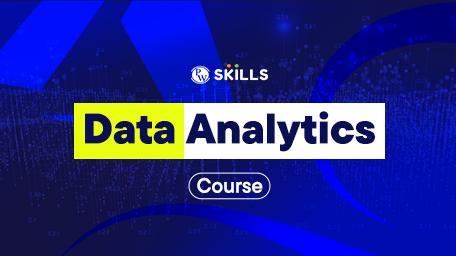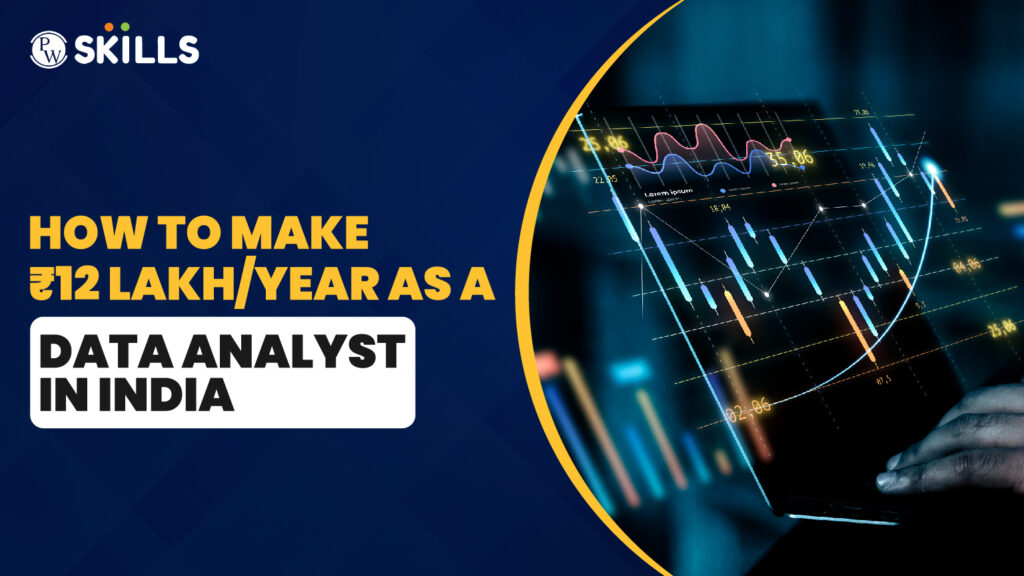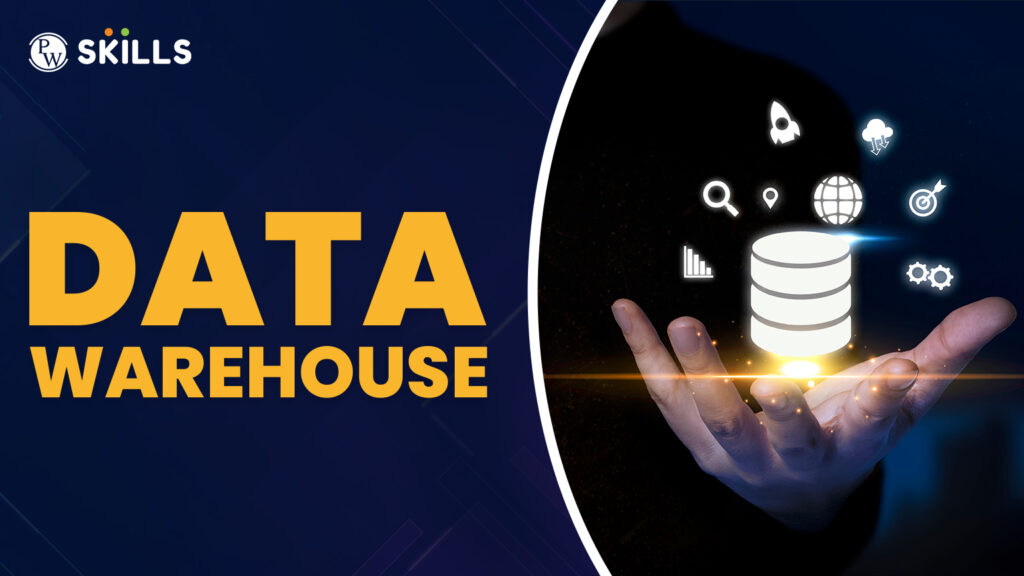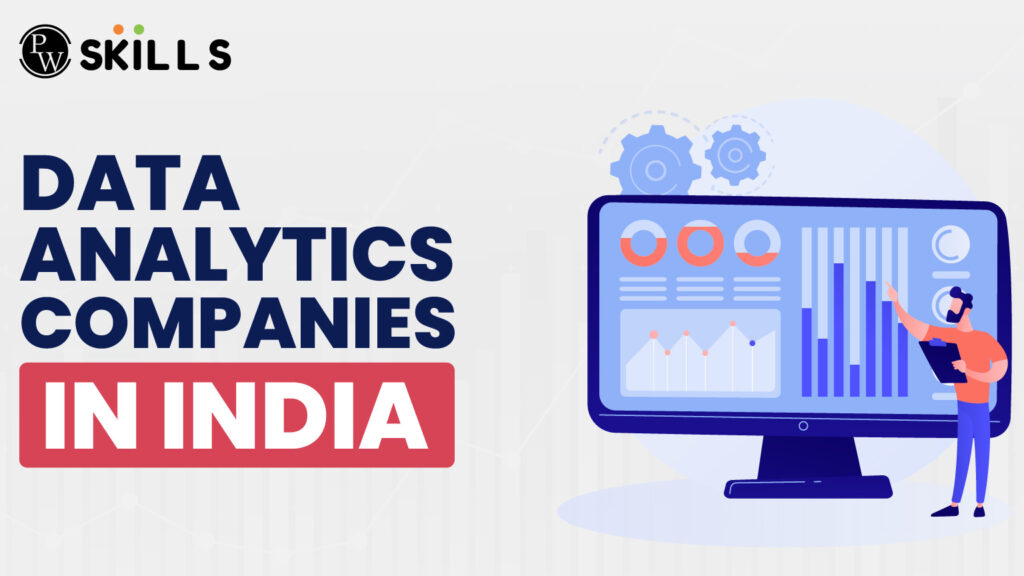Data Science and Analytics: In the digital era, where data reigns supreme, two key roles have emerged as benchmarks in extracting value from the vast sea of information: Data Scientists and Data Analysts. As organisations harness the power of data to drive decision-making, it becomes crucial to understand the nuances that distinguish these roles. In this article, we will discuss the differences between data science and analytics, their processes, the skills and tools required, and ultimately, the key differences that set them apart.
If you’re looking to build a highly impactful and lucrative career in data analytics, then PhysicsWallah’s Mastering Data Analytics course is just what you need! Our course is mentored by the big names in the data analytics industry that will teach you everything you need to succeed as a data analyst. So, don’t wait! Use the coupon code – “READER” during checkout and get an exclusive discount on all courses from PW Skills. Enroll now!
What Is Data Science?
Utilising tools such as programming, statistics, machine learning, and algorithms, Data Science encompasses merging, organising, and analysing large datasets, which often contain both structured and unstructured information.
The primary aim of data science is usually to recognize patterns and generate practical insights. However, it can also aim to uncover broader insights through asking pertinent questions, determining the right queries, and pinpointing areas for investigation.
Examples of outcomes in data science encompass suggestions derived from collaborative filtering, predictions and anticipations rooted in past activities, segmentation through defining characteristics, spotting irregularities for fraud detection, and automated decision-making based on model parameters.
Also read: Top Data Science Courses In 2024
Data Science Process
If you’re thinking about a career as a data scientist and wondering, “What does a data scientist do?” Here are the six main stages in the data science process:
- Defining Goals: The data scientist collaborates with business stakeholders to set clear goals for the analysis. These goals can be specific, like improving an advertising campaign, or broad, like enhancing overall production efficiency.
- Collecting Data: If there aren’t existing systems to collect and store source data, the data scientist establishes a systematic process to do so.
- Integrating & Managing Data: The data scientist uses best practices for data integration to convert raw data into organised information ready for analysis. This involves processes like data replication, ingestion, and transformation to unify different data types into standardised formats stored in a repository like a data lake or data warehouse.
- Investigating & Exploring Data: In this step, the data scientist conducts an initial exploration of the data through exploratory data analysis, often using a data analytics platform or business intelligence tool.
- Developing Models: Based on business objectives and data exploration, the data scientist selects potential analytical models and algorithms. These models are built using languages such as SQL, R, or Python, applying data science techniques like AutoML, machine learning, statistical modelling, and artificial intelligence. The models undergo iterative testing until they meet the required criteria.
- Deploying Models and Presentation: Once selected and refined, the models are run with available data to generate insights. These insights are then communicated to stakeholders using advanced data visualisation and dashboards. Adjustments to the model are made based on feedback from stakeholders as needed.
Recommended Technical Course
- Full Stack Web Development Course
- Generative AI Course
- DSA C++ Course
- Java+DSA 1.0 Course
- Data Analytics Course
- Data Science with ML 1.0 Course
Data Scientist Skills and Tools
In today’s fast-paced business environment with a vast amount of data, data scientists play a crucial role in helping organisations achieve their objectives. A contemporary data scientist is expected to:
- Plan and manage data integration systems and data storage.
- Collaborate with business stakeholders to establish data governance rules and enhance data integration and management procedures and systems.
- Have a thorough understanding of their company or organisation and its position in the market.
- Use business intelligence or data analytics tools to investigate and explore large sets of organised and unorganised data.
- Develop analytical models and algorithms using languages like SQL, R, or Python, and apply data science methods such as machine learning, statistical modelling, and artificial intelligence.
- Test, execute, and refine these models within a prescriptive analytics or decision support system to generate the required business insights.
- Effectively convey trends, patterns, predictions, and insights to all stakeholders through verbal communication, written reports, and data visualisation.
Data Scientist Skills
A proficient data scientist should excel in addressing intricate issues, demonstrating the ability to:
- Define objectives and interpret results using business domain expertise.
- Optimise the organisation’s data infrastructure management.
- Apply relevant programming languages, statistical techniques, and software tools.
- Display curiosity to explore and identify trends and patterns in data.
- Communicate and collaborate effectively throughout the organisation.
What Is Data Analytics?
Similar to data science, data analytics involves employing tools and procedures to merge and analyse datasets for the purpose of recognizing patterns and deriving practical insights. Similarly, the objective, like in data science, is to assist organisations in making improved, data-informed decisions. However, a notable distinction is that data analytics generally places greater emphasis on addressing particular questions rather than engaging in open-ended exploration.
Data Analytics Process
The main steps in the data analytics process include stating requirements, bringing together and handling the data, examining the data, and communicating the findings.
- Project Requirements & Data Collection: Identify the question(s) you want to address and make sure you’ve gathered the necessary source data.
- Data Integration & Management: Change unprocessed data into tidy, business-ready information. This stage involves replicating and inputting data to merge various types into standardised formats stored in a repository like a data warehouse or data lake. These are controlled by specific rules.
- Data Analysis, Collaboration, and Sharing: Examine your data and collaborate with others to gain insights using data analytics software. Afterward, distribute your discoveries across the organisation through engaging interactive dashboards and reports. Some modern tools provide self-service analytics, allowing any user to analyse data without coding. They also offer conversational analytics, allowing natural language exploration of data. These features boost data literacy, enabling more users to work with and derive value from their data.
Data Analyst Role and Skills Needed
For those contemplating a path in data analytics, a pertinent question might arise: “What responsibilities does a data analyst undertake?” Even with the advent of user-friendly data analytics tools, the significance of a data analyst persists in numerous organisations.
Data Analyst Responsibilities
A contemporary data analyst is expected to:
- Develop and manage data integration systems and data repositories.
- Collaborate with the IT team to create data governance policies and enhance data integration and management processes and systems.
- Grasp the nature of their company or organisation and its position in relation to external and competitive trends.
- Utilise a data analytics or BI tool to construct applications, conduct analyses, generate dashboards and visualisations, and explore data thoroughly to uncover relationships and insights.
- In the absence of a comprehensive analytics or BI platform, employ statistical tools to analyse data sets and discover insights.
- Produce dashboards and KPI reports for stakeholders, utilising data to clearly convey trends, patterns, and predictions.
Data Analyst Skills
Regarding the required skills, an excellent data analyst should possess the ability to collaborate and communicate efficiently with various stakeholders, alongside the essential technical know-how. Business-related skills involve contributing to goal definition and presenting examples of Key Performance Indicators (KPIs).
The technical expertise encompasses proficiency in data integration and management, data modelling, R or SAS, SQL programming, statistical analysis, reporting, and data analysis. These competencies are commonly acquired through a foundation in mathematics and statistics, and in some cases, through a master’s degree in analytics.
Also read: Data Analyst Roadmap 2024: Responsibilities, Skills Required, Career Path
Data Science and Analytics Difference
Data Science and Data Analytics are related fields that involve working with data to extract insights and make informed decisions, but they have distinct differences in terms of scope, techniques, and objectives.
Data Science
Scope:
- Data Exploration and Preparation: Exploring and preparing data in data science consumes much time. Tasks involve managing missing values, addressing outliers, and converting raw data for analysis.
- Feature Engineering: Data scientists frequently craft new features from existing data to enhance predictive model performance.
- Unstructured Data: Data science encompasses both structured and unstructured data, spanning text, images, audio, and video.
Techniques:
- Machine Learning: Data scientists use a wide array of machine learning techniques, ranging from supervised learning (classification, regression) to unsupervised learning (clustering, dimensionality reduction).
- Deep Learning: For tasks like image and speech recognition, natural language processing, and complex pattern recognition, deep learning methods (neural networks) are commonly employed.
- Predictive Modelling: An essential facet of data science involves formulating predictive models, typically aiming to forecast forthcoming outcomes.
Objective:
- Complex Problem Solving: Data science tackles intricate issues, delving into queries lacking instant answers.
- Innovation: At the vanguard of innovation, data science centres on crafting fresh algorithms, methodologies, and tactics to glean valuable insights from data.
Data Analytics
Scope:
- Descriptive Analytics: Data analytics primarily deals with descriptive statistics, summarising and interpreting historical data to understand what has happened in the past.
- Structured Data: Data analytics zeroes in on organised information like databases and spreadsheets, aiding in reporting and assessing performance.
- Business Intelligence: Linked with business intelligence, it commonly offers valuable insights for daily decision-making.
Techniques:
- Statistical Analysis: Data analytics involves statistical methods to analyse trends, patterns, and relationships in historical data.
- Querying and Reporting: Analysts often use tools like SQL for querying databases and generating reports. Visualisation tools like Tableau or Power BI are also common for presenting findings.
- Dashboard Creation: Data analytics often involves the creation of dashboards that provide a snapshot of key performance indicators and metrics.
Objective:
- Operational Decision Support: The primary goal of data analytics is to support operational decision-making by providing insights into current performance and trends.
- Efficiency and Optimization: Analytics is frequently used to identify areas for process improvement and optimization within an organisation.
- Answering Specific Questions: Data analytics often addresses specific business questions and is more focused on providing answers to immediate queries.
Also read: Data Analytics Salary 2024 & How Much Do Data Analysts Make?
Data Science vs Data Analytics
There is a significant difference between Data Science and Data Analytics. We will see them one by one for each feature.
| Data Science vs Data Analytics | ||
| Feature | Data Science | Data Analytics |
| Coding Language | Python is the most commonly used language for data science along with the use of other languages such as C++, Java, Perl, etc. | Knowledge of Python and R Language is essential for Data Analytics. |
| Programming Skills | In-depth knowledge of programming is required for data science. | Basic Programming skills are necessary for data analytics. |
| Use of Machine Learning | Data Science makes use of machine learning algorithms to get insights. | Data Analytics does not use machine learning to get the insight of data. |
| Other Skills | Data Science makes use of Data mining activities for getting meaningful insights. | Hadoop Based analysis is used for getting conclusions from raw data. |
| Scope | The scope of data science is large. | The Scope of data analysis is micro i.e., small. |
| Goals | Data science deals with explorations and new innovations. | Data Analysis makes use of existing resources. |
| Data Type | Data Science mostly deals with unstructured data. | Data Analytics deals with structured data. |
| Statistical Skills | Statistical skills are necessary in the field of Data Science.. | The statistical skills are of minimal or no use in data analytics. |
In the vast realm of data, Data Science and Data Analytics extract meaningful insights. Data Scientists and Analysts contribute distinct skills, enhancing data-driven decision-making. grasping processes, skills, and tools for each role is crucial for organisations maximising their data potential.
As we navigate the data maze, it’s crucial to recognize the complementary nature of these roles. While Data Scientists focus on building predictive models, Data Analysts excel at interpreting historical data. Together, they form a symbiotic relationship, providing organisations with a holistic approach to deriving value from their data.
Also read: What Is the Importance of Statistics for Data Science in 2024?
FAQs
How does the collaboration aspect differ between Data Science and Data Analytics?
Data Science tasks are often solitary, whereas Data Analytics frequently involves collaboration with stakeholders to share insights and inform strategic choices.
Can Data Scientists use Jupyter Notebooks for collaborative work?
Yes, Data Scientists use Jupyter Notebooks for collaborative work, creating and sharing live code, equations, visualisations, and narrative text.
What is the primary goal of exploratory data analysis in Data Science?
The primary goal of exploratory data analysis is to uncover patterns, trends, and outliers within the dataset, providing a preliminary understanding before advanced analyses.
What makes a good data visualisation tool for Data Analysts?
A good data visualisation tool for Data Analysts should allow the creation of clear and concise visualisations; Tableau is an example widely used for this purpose.
Why is domain knowledge important for Data Scientists?
Domain knowledge is important for Data Scientists because it helps contextualise results and understand the industry-specific implications of their analyses.






